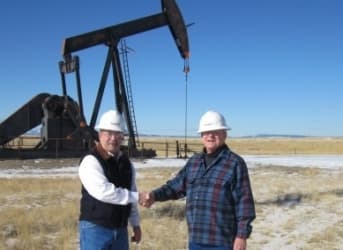Most investors have been attracted to the oil and energy industry due to its history of paying out large dividends. Blue Chip oil stocks have been known to possess management teams that are financially prudent, and shareholder friendly. This is why companies such as Chevron, ConocoPhillips, and ExxonMobil, have garnered much attention in the investment community. But, due to the large decline in the oil price, most investors are now wondering whether or not these dividends are sustainable.
To answer that question, one has to first realize that it all depends on how long this price environment lasts. If oil prices stay low for 5 or 6 more years, then the current dividend arrangements are certainly not sustainable. But, oil prices below $45 per barrel are also unsustainable.
For evidence of that, one just needs to look at Saudi Arabia’s treasury burn rate. A burn rate is the rate in which an entity is losing cash, or decreasing its cash reserves. For Q1 of 2015, Saudi Arabia posted a burn rate of $16 billion dollars. For the year, one must assume Saudi Arabia’s average burn rate would be around $60 billion dollars a year. Related: Energy Investors May Have A Long Wait Ahead
Dating back to June of 2014, Saudi Arabia’s treasury contained a cash reserve of $750 billion dollars. Currently, it has an estimated burn rate of roughly $60 billion dollars a year. Theoretically, Saudi Arabia can maintain this low oil price environment for up to 8 years. But in reality, they wouldn’t want to burn all of their reserves, especially when government expenditures are increasing. As an example, for this year, educations expenditures have increased by 3 percent, health and social affairs expenditures have increased by 48 percent, and military spending has increased by 18 percent.
As a result, Saudi Arabia will probably only be able to realistically wage their war for market share for roughly 1 or 2 more years. This is due to the fact that expenditures are rising, and over 80 percent of government revenue is derived from oil exports, so Saudi Arabia can’t afford this low price environment for much longer.
But how long can ExxonMobil, Chevron, and Conoco Phillips maintain their dividends if these prices persist over the next 2-3 years?
Let’s explore 3 internal factors: the strength of each company’s balance sheet, the company’s dividend payout ratio, and the company’s cash flow.
Chevron- In order to calculate Chevron’s cash flow, I added its operating cash flow plus depreciation, depletion and amortization (DD&A), and that equated to $17.6 billion dollars. I added DD&A, because that expense was already paid for, and doesn’t contribute to a cash burn. Then I subtracted its CAPEX, which equated to $17.3 billion dollars. Related: Where Is Oil Heading? New Reports From IEA, OPEC, And EIA Provide Clues
So far, the company is cash flow positive of $300 million dollars, based on numbers from its investor report. In terms of its dividend payout ratio, its payout ratio is over 100 percent, which is very high. Its balance sheet is strong with a current ratio of 1.4, based on numbers from google finance, a quick ratio of 1.01, and total assets/total liabilities ratio of 2.3.
This equates to a strong balance sheet. I believe over the next year, the company’s cash flow and balance sheet strength could enable it to maintain its dividend, especially since its high liabilities to asset ratio allows Chevron to sell off non-core assets in order to pay off future liabilities or payout current dividends. But its high payout ratio does expose itself to a dividend cut, if these prices persist for another 2 plus years.
Exxon Mobil- For Exxon, I calculated them to be cash flow positive by generating over $11 million dollars in cash flow from current operations. In terms of its balance sheet, I calculated a current ratio of .88, a quick ratio of .52, and a total asset to total liability ratio of 1.9. Its dividend has a payout ratio of 70 percent. Based on these numbers, I think a dividend cut could occur within the next year, but due to its large refinery business, it can remain cash flow positive for the next several years. But over the next 2-3 years, if these prices persist, a dividend cut would occur, due to some balance sheet weakness, and high payout ratio. Related: Better Times Ahead For Oil, If You Can Believe It
ConocoPhillips- Currently, ConocoPhillips has a high payout ratio of over 1,000 percent. This is solely due to low oil prices. This payout ratio can be misleading, because unlike Chevron and Exxon, ConocoPhillips is mostly an exploration and production company, and not a vertically integrated company with a downstream refinery segment. This means that its income can increase and decrease at a much more drastic rate then Chevron or Exxon.
In terms of cash flow, ConocoPhillips generated a negative rate of $500 million dollars in cash flow, on a year to date basis. Its balance sheet is relatively strong, posting a current ratio of 1.4, a quick ratio of 1.02, but its total assets to total liabilities ratio only posted a number of 1.76. Based on balance sheet strength, I do not believe a dividend cut for ConocoPhillips would occur this year, but if these prices do persist for another year, then ConocoPhillips would be forced to make a dividend cut in my opinion, due to its high payout ratio, and weak liabilities to asset ratio number.
By John Manfreda For Oilprice.com
More Top Reads From Oilprice.com:
- Could This Be The Next Great Renewable Energy Source?
- What’s Really At Stake With The Iran Nuclear Deal
- BP Refinery Outage Could Push Down Oil Prices


















